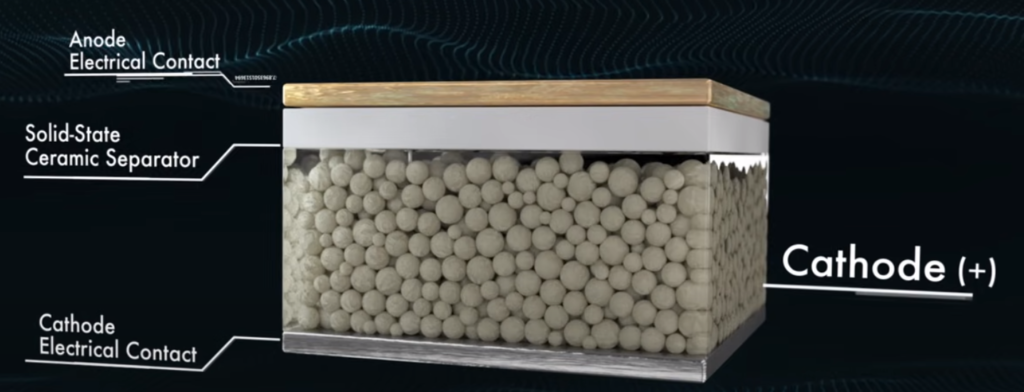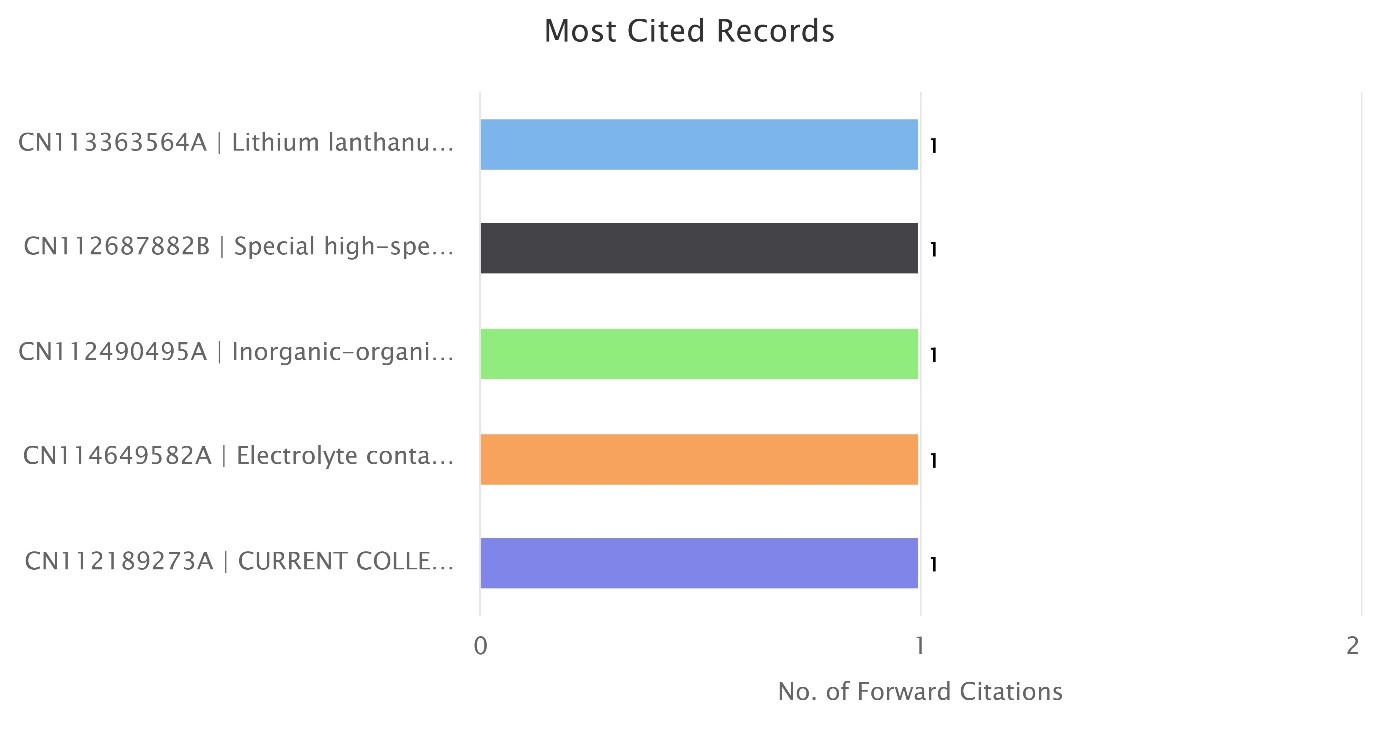In the ever-evolving landscape of energy storage, solid-state batteries have emerged as a groundbreaking technology with the potential to redefine the way we power our devices, vehicles, and homes. As the demand for cleaner and more efficient energy solutions intensifies, the spotlight on solid-state batteries grows brighter, promising a safer, more energy-dense, and environmentally friendly alternative to traditional lithium-ion batteries.
Understanding Solid-State Batteries
Unlike conventional lithium-ion batteries that use liquid electrolytes to facilitate the flow of ions between the positive and negative electrodes, solid-state batteries employ solid electrolytes. These solid electrolytes, often composed of advanced materials such as ceramics or polymers, replace their liquid counterparts, eliminating the risk of leakage and significantly enhancing the safety profile of the battery.



The Anatomy of Solid-State Batteries
The architecture of a solid-state battery typically consists of three main components – the solid electrolyte, the positive electrode (cathode), and the negative electrode (anode). The solid electrolyte acts as the conductor, enabling the movement of ions between the cathode and anode. Notably, the absence of flammable liquid electrolytes reduces the likelihood of thermal runaway, addressing a key safety concern associated with traditional batteries.
1. Solid Electrolyte
- At the heart of a solid-state battery is the solid electrolyte, a key departure from the liquid electrolytes found in traditional batteries. This solid material serves as the medium through which ions travel between the positive and negative electrodes during the battery’s charge and discharge cycles. Solid electrolytes are typically made from advanced materials such as ceramics, polymers, or a combination of both. These materials are chosen for their ability to conduct ions efficiently while offering enhanced stability and safety.
2. Positive and Negative Electrodes
- Similar to conventional batteries, solid-state batteries consist of positive (cathode) and negative (anode) electrodes. The cathode and anode materials play a crucial role in determining the performance characteristics of the battery. Researchers are actively exploring various materials to optimize these electrodes for improved energy density, longer cycle life, and faster charging capabilities.
3. Ion Movement
- During the charging process, ions move from the cathode to the anode through the solid electrolyte. This movement of ions creates an electric current that can be harnessed to power electronic devices or, in the case of electric vehicles, propel the vehicle. The solid-state nature of the electrolyte eliminates the need for a liquid medium, reducing the risk of thermal runaway and enhancing the overall safety of the battery.
4. Charge and Discharge Cycle
- Solid-state batteries operate through a reversible electrochemical reaction that occurs between the cathode and anode. During charging, positive ions (cations) migrate from the cathode to the anode, where they are stored. Conversely, during discharge (when the battery is providing power), these ions move from the anode back to the cathode. This cycle can be repeated numerous times, and the efficiency of this process is crucial for the longevity of the battery.
Solid-state battery vs Lithium Ion battery
Solid-State Batteries
These have the potential to achieve higher energy density compared to traditional lithium-ion batteries. This increased energy density is mainly attributed to the use of solid electrolytes instead of liquid electrolytes. The solid electrolytes allow for more compact packaging of the battery components, reducing the overall size and weight while maintaining or even enhancing energy storage capacity.
The higher energy density of solid-state batteries makes them particularly attractive for applications where size and weight are critical factors, such as in electric vehicles (EVs) and portable electronic devices. A key goal of ongoing research and development in solid-state battery technology is to further optimize and improve energy density to make these batteries even more competitive with existing technologies.
Lithium-Ion Batteries
These are currently dominating the market, and have undergone significant advancements over the years, resulting in a high energy density compared to previous battery technologies. Traditional lithium-ion batteries typically use liquid electrolytes, and their energy density is well-established.
While lithium-ion batteries have served us well in various applications, there is an inherent limitation to how much their energy density can be improved using current technology. As demands for higher energy density, longer battery life, and faster charging increase, researchers and manufacturers are exploring alternative technologies, including solid-state batteries, to push these limits.
| Parameter | Solid-State Batteries | Lithium-Ion Batteries |
| Energy Density | Higher potential energy density | High energy density, but may be reaching limits of current technology |
| Size and Weight | More compact and lighter for the same capacity | Slightly larger and heavier for the same capacity |
| Energy Storage Capacity | Can store more energy in a given space or weight | Established technology with competitive energy storage capacity |
| Safety | Generally considered safer due to the absence of flammable liquid electrolytes | Adequate safety with some risks associated with liquid electrolytes |
| Applications | Attractive for EVs, portable electronics, and renewable energy storage due to compactness and safety | Widely used in various applications including EVs, consumer electronics, and grid storage |
| Technological Maturity | Still in the early stages of commercialization, ongoing research and development | Mature technology with a well-established market presence |



Safety Profile of SSD vs Lithium-Ion Batteries
Solid-state batteries are generally considered safer than traditional lithium-ion batteries due to several inherent characteristics of their design and construction:
1. Absence of Flammable Electrolytes
- One of the primary safety advantages of solid-state batteries is the elimination of flammable liquid electrolytes. Traditional lithium-ion batteries use liquid electrolytes, and in the event of a malfunction, such as overheating or damage to the battery, these electrolytes can catch fire. Solid-state batteries, on the other hand, use solid electrolytes, reducing the risk of thermal runaway and mitigating the potential for fires.
2. Reduced Risk of Thermal Runaway
- Solid-state batteries exhibit a lower risk of thermal runaway compared to lithium-ion batteries. Thermal runaway is a chain reaction of heat generation and battery failure that can lead to catastrophic consequences. The solid electrolytes used in solid-state batteries are more stable at high temperatures, contributing to the overall safety of the battery.
3. Improved Mechanical Stability
- Solid-state batteries often have improved mechanical stability because the solid electrolytes are less susceptible to physical damage or puncture. In contrast, the liquid electrolytes in traditional lithium-ion batteries can leak if the battery casing is compromised, potentially leading to short circuits and thermal issues.
4. Resistance to Dendrite Formation
- Solid-state batteries are less prone to the formation of lithium dendrites. Dendrites are microscopic, needle-like structures that can grow inside a battery over time, potentially causing internal short circuits and safety hazards. Solid electrolytes can impede dendrite growth, enhancing the overall safety and longevity of the battery.
5. Operating Temperature Range
- Solid-state batteries often have a wider operating temperature range compared to lithium-ion batteries. This characteristic allows solid-state batteries to maintain better performance and safety in extreme temperature conditions, which is particularly important for applications like electric vehicles.
6. Improved Chemical Stability
- Solid-state electrolytes can exhibit higher chemical stability, reducing the likelihood of reactions that could lead to degradation or failure of the battery. This improved stability contributes to the long-term reliability of solid-state batteries.
While solid-state batteries offer these safety advantages, it’s essential to note that the technology is still in the early stages of commercialization. Researchers and manufacturers continue to address challenges and refine the design of solid-state batteries to optimize their performance and safety further. As the technology matures, solid-state batteries have the potential to become a safer and more reliable alternative to traditional lithium-ion batteries for various applications.
Leading Players Companies in the field of Solid-State Batteries
Here are some of the leading players in the field of solid-state batteries:
1. QuantumScape
- QuantumScape is a company that has garnered significant attention for its work on solid-state batteries. The company focuses on developing solid-state lithium-metal batteries for electric vehicles (EVs) and has received investments and partnerships from major automotive manufacturers.
2. Solid Power
- Solid Power is another notable player in the solid-state battery space. The company works on developing solid-state batteries for electric vehicles and has collaborated with automotive industry leaders to advance its technology.
3. Toyota
- Toyota is a major automaker with a strong emphasis on electric vehicle development and sustainable mobility. The company has been actively investing in solid-state battery research and development, aiming to bring this technology to the automotive market.
4. Samsung SDI
- Samsung SDI, the battery manufacturing arm of Samsung, has been investing in the development of advanced battery technologies, including solid-state batteries. The company aims to play a significant role in the evolution of energy storage solutions.
5. LG Energy Solution
- LG Energy Solution, a subsidiary of LG Chem, is involved in the development and production of advanced batteries. LG has shown interest in solid-state battery technology and is likely to play a role in the commercialization of solid-state batteries.
6. Panasonic
- Panasonic, a well-known player in the battery industry and a major supplier to the automotive sector, has also expressed interest in solid-state battery technology. The company is exploring advancements in battery technologies to meet the growing demands of electric vehicles.
7. BASF SE
- BASF is a global chemical company with an interest in the development of materials for energy storage applications. They are involved in research and development efforts related to solid-state battery materials.
8. Cymbet Corporation
- Cymbet focuses on thin-film solid-state battery technology for applications in IoT devices, medical devices, and other small electronic systems. Their thin-film approach provides flexibility in design and integration.
| Company | Focus Area/Technology | Notable Collaborations/Projects |
| QuantumScape | Solid-state lithium-metal batteries for electric vehicles | Collaborations with automotive manufacturers; received investments |
| Solid Power | Solid-state batteries for electric vehicles | Partnerships with automotive industry leaders |
| Toyota | Solid-state battery research and development | Pursuing solid-state battery technology for electric vehicles |
| Samsung SDI | Advanced battery technologies, including solid-state | Ongoing research and development in solid-state batteries |
| LG Energy Solution | Advanced batteries, including interest in solid-state | Focused on advancements in battery technology for various applications |
| Panasonic | Batteries for electric vehicles, exploring solid-state | Supplier of batteries to the automotive sector; interest in solid-state |
| BASF SE | Materials for energy storage, including solid-state | Research and development in materials for advanced batteries |
| Cymbet Corporation | Thin-film solid-state batteries for small electronic systems | Focus on IoT devices, medical devices, and small electronics |
However, some partnerships and announcements hinted at the potential use of solid-state batteries in future electric vehicles (EVs). Here are a few examples:
Partnerships and Announcements in the Use of Solid-state Batteries
1. Toyota
- Toyota has been a key player in solid-state battery research and development. The company has expressed its commitment to bringing solid-state batteries to the market and has announced plans to unveil an electric vehicle powered by solid-state batteries.
2. QuantumScape
- QuantumScape, a company specializing in solid-state batteries, has garnered attention for its work on next-generation battery technology. While they are not a vehicle manufacturer themselves, they have collaborations with major automotive companies, and their solid-state battery technology is intended for use in electric vehicles.
3. Fisker Inc
- Fisker, an electric vehicle manufacturer, has announced plans to use solid-state battery technology in its electric vehicles. The company aims to achieve longer range, faster charging times, and enhanced safety with the adoption of solid-state batteries.
4. BMW
- BMW has been exploring solid-state battery technology as part of its commitment to advancing electric mobility. While specific models and timelines may not have been confirmed, BMW has expressed interest in the potential advantages offered by solid-state batteries.
In conclusion, solid-state batteries are reshaping the energy storage landscape with their potential for enhanced safety, higher energy density, and environmental friendliness compared to traditional lithium-ion batteries. The absence of flammable electrolytes, reduced risk of thermal runaway, and improved stability make them a compelling alternative.
Industry leaders like QuantumScape, Solid Power, Toyota, and others are driving innovation, with potential applications in electric vehicles gaining traction. While still in early commercialization stages, solid-state batteries represent a promising avenue for a safer, more efficient, and sustainable energy future. As these technologies mature, they have the potential to redefine energy storage across various applications.
Patent / Innovation Trends Situation in Sodium Ion Technology
We conducted a preliminary analysis of titles and abstracts within the patent applications related to Solid-state Batteries, revealing approximately 8,000 families as of December 2023.
While many traditional automotive players currently dominate this space, there is a noteworthy infusion of diverse players, including electronic equipment manufacturers like Samsung, LG, and Panasonic, as well as film producers, creating an intriguing mix of contributors reliant on advanced battery technologies.



Patent Applications Filing Trend in Solid-State Battery Technology (Years)
Since 2014, there has been a gradual increase in patent filings, underscoring the substantial research efforts dedicated to this field.



Global Distribution of Patent Applications related to Solid-State Batteries
Here, we present the global distribution of these patent applications. China emerges as the predominant contributor, followed by Japan, the USA and PCT applications at WIPO.



The scarcity of forward citations on patents raises intriguing considerations. A limited number of citations may imply various scenarios. Firstly, it could indicate that the patented technology lacks widespread recognition or adoption within the field. This may be attributed to its perceived lack of ground breaking innovation or practical applications that others find compelling.



Secondly, the absence of forward citations might suggest that the patented technology is not easily integrable or relevant to other advancements in the field. In essence, the patented idea may be too specialized or confined, curtailing its broader influence.
Lastly, the dearth of citations may hint at the patent holder’s inactive efforts in licensing or enforcing their patent. Consequently, other inventors or companies might not be incorporating or referencing that specific technology, limiting its impact on the broader landscape.
How we can assist you?
As the electric vehicle industry surges towards a future powered by innovation, solid-state batteries stand as the beacon of progress. To our esteemed audience of Chief R&D Officers, Chief Innovation Officers, CTOs, CEOs, and dedicated scientists in EV battery research, we extend an invitation to amplify your journey. Explore the vast potential of solid-state batteries with our expert assistance in patent technology landscapes, freedom-to-operate searches, and comprehensive patent/non-patent literature analyses. Elevate your research and development initiatives, ensuring not only groundbreaking discoveries but also strategic protection. Connect with us to embark on a transformative collaboration that propels your vision into the future of energy storage.



